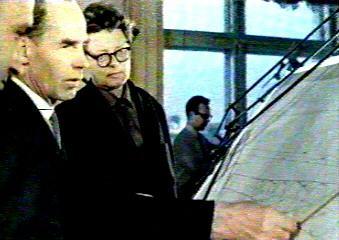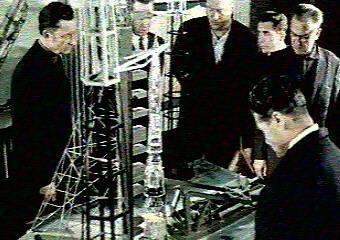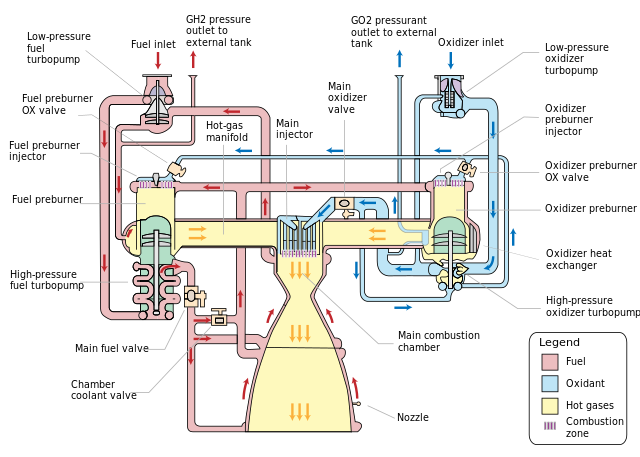A Mars Program without NERVA would be difficult. If we were to rely on chemical propulsion, the result would be a scaled down mission with a total mass in LEO of 1,900 tonnes, requiring 71 Space Shuttle flights to assemble and refuel!So you're talking about spending years of development and billions of dollars on a nuclear stage that's exclusive to Mars? That's money much better spent elsewhere if it's at all practical--making a better shuttle, building a larger Shuttle fleet if necessary, the actual Mars transfer habitat, lander, surface hardware, etc.
It would be much simpler, safer, easier and cheaper with the nuclear shuttle and allow two full-scale expedition spacecraft traveling in convoy (allowing full and total redundancy & backup, something important for 600+ day mission).
The original NASA plan for the Nuclear Shuttle would be that it would be used for the Lunar Program & Mars Program (and sending large payloads tp Geosynchronous orbit if desired). The entire point of the Integrated Program Plan as designed was for the hardware elements to be capable of performing multiple missions and having multiple applications so they could all be justified independently of the Mars mission and have other useful applications.
Chemical Tug: Launching Space Probes & Satellites, A Two-Way crew-cargo Lunar Lander, A One Way cargo lunar lander, A manned spacecraft for servicing and refueling satellites and telescopes in different orbits etc.
Nuclear Shuttle: Launching large amounts of cargo and crew to the Moon, Mars or Geosynchronous Orbit with significantly lower propellant mass.
Space Station Module: An Earth Orbiting Space Station, A Lunar Surface Habitat for lunar base, A habitat for a Manned Mars spacecraft, A habitat for a Manned Mars Surface Base. A Geosynchronous orbit station if desired.
The IPP is created in such a way that the only major hardware element that actually needed to be developed specifically for Mars is, the Mars Excursion Module (MEM, the lander & temporary surface habitat essentially). Hardware commonality was a major theme of the entire proposed program. The Nuclear Shuttle would save money in propellant cost and allow a greatly expanded lunar base program in addition to the Mars program.
The plan would be for the Saturn INT-21 to launch the Nuclear Shuttle in a single piece (no need for on-orbit assembly) and then have Space Shuttles in tanker mode refuel it. On the Nuclear Shuttles first missions, it would require a single Space Shuttle to top off the tank. On later missions it would require 6 Shuttle tanker missions to fully refuel its tanks and 2 to deliver all the necessary payload.Or just fly dedicated tanker missions, maybe even with a specifically modified orbiter able to transfer the propellant from its own ascent tanks to the depot. The rest is a flight rate question, and more flights is better there--it helps spread the costs of the standing army, and better justifies the development of a fully reusable Shuttle
We're open to criticism and changing most elements of our Timeline except for this one. The Nuclear Shuttle stays and that's final. It's really necessary for what we're doing. The program we're attempting can't be achieved with Chemical Tugs substituting the Nuclear Shuttle.
Last edited:



